1、编写一个简单程序,要求数组长度为5,分别赋值10,20,30,40,50,在控制台输出该数组的值。(知识点:数组定义和创建、一维数组初始化)[必做题]?
public class lwm1 { /** * @param args */ public static void main(String[] args) { // TODO Auto-generated method stub // 1、编写一个简单程序,要求数组长度为5,分别赋值10,20,30,40,50,在控制台输出该数组的值。(知识点:数组定义和创建、一维数组初始化)[必做题]? int a[] = new int[5]; for (int i = 0; i < a.length; i++) { a[i] = (i + 1) * 10; System.out.println(a[i]); } } }
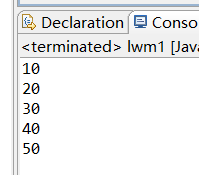
2、将一个字符数组的值(neusofteducation)拷贝到另一个字符数组中。(知识点:数组复制) [必做题]?
public class lwm2 { /** * @param args */ public static void main(String[] args) { // TODO Auto-generated method stub // 2、将一个字符数组的值(neusofteducation)拷贝到另一个字符数组中。(知识点:数组复制) [必做题]? char a[] = { 'n', 'e', 'u', 's', 'o', 'f', 't', 'e', 'd', 'u', 'c', 'a', 't', 'i', 'o', 'n' }; char copy[] = new char[16]; System.arraycopy(a, 0, copy, 0, 16); System.out.println(new String(copy)); } }

3、给定一个有9个整数(1,6,2,3,9,4,5,7,8)的数组,先排序,然后输出排序后的数组的值。(知识点:Arrays.sort排序、冒泡排序)
import java.util.Arrays; public class lwm3 { /** * @param args */ public static void main(String[] args) { // TODO Auto-generated method stub // 3、给定一个有9个整数(1,6,2,3,9,4,5,7,8)的数组,先排序,然后输出排序后的数组的值。(知识点:Arrays.sort排序、冒泡排序) int a[] = { 1, 6, 2, 3, 9, 4, 5, 7, 8, }; Arrays.sort(a); for (int i = 0; i < a.length; i++) { System.out.println(a[i]); } } }

public class lwm4 { /** * @param args */ public static void main(String[] args) { // TODO Auto-generated method stub // 3、给定一个有9个整数(1,6,2,3,9,4,5,7,8)的数组,先排序,然后输出排序后的数组的值。(知识点:Arrays.sort排序、冒泡排序) int a[] = { 1, 6, 2, 3, 9, 4, 5, 7, 8 }; for (int i = 0; i < a.length - 1; i++) { for (int j = 0; j < a.length - 1 - i; j++) { if (a[j] > a[j + 1]) { int temp = a[j]; a[j] = a[j + 1]; a[j + 1] = temp; } } } for (int i = 0; i < a.length; i++) { System.out.println(a[i]); } } }
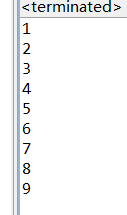
4、 输出一个double型二维数组(长度分别为5、4,值自己设定)的值。(知识点:数组定义和创建、多维数组初始化、数组遍历)
public class lwm5 { /** * @param args */ public static void main(String[] args) { // TODO Auto-generated method stub // 4、 输出一个double型二维数组(长度分别为5、4,值自己设定)的值。(知识点:数组定义和创建、多维数组初始化、数组遍历) double a[][] = { { 1, 2, 3, 4 }, { 2, 3, 4, 5 }, { 3, 4, 5, 6 }, { 4, 5, 6, 7 }, { 5, 6, 7, 8 } }; for (int i = 0; i < a.length; i++) { for (int j = 0; j < a.length - 1; j++) { System.out.print(a[i][j] + " "); } System.out.println(); } } }

5、 在一个有8个整数(18,25,7,36,13,2,89,63)的数组中找出其中最大的数及其下标。(知识点:数组遍历、数组元素访问) [必做题]?
public class lwm6 { /** * @param args */ public static void main(String[] args) { // TODO Auto-generated method stub // 5、 在一个有8个整数(18,25,7,36,13,2,89,63)的数组中找出其中最大的数及其下标。(知识点:数组遍历、数组元素访问) // [必做题]? int a[] = { 18, 25, 7, 36, 13, 2, 89, 63 }; int max = a[0]; int maxidx = 0; for (int i = 0; i < a.length; i++) { if (a[i] > max) { max = a[i]; maxidx = i; } } System.out.println("最大值为" + max + "下标为" + maxidx); } }

作业
6、将一个数组中的元素逆序存放(知识点:数组遍历、数组元素访问)
import java.util.Scanner; public class lwm1 { /** * @param args */ public static void main(String[] args) { // TODO Auto-generated method stub // 6、将一个数组中的元素逆序存放(知识点:数组遍历、数组元素访问) Scanner input = new Scanner(System.in); int a[] = new int[5]; for (int i = a.length; i > 0; i--) { a[i - 1] = input.nextInt(); } for (int i = 0; i < a.length; i++) { System.out.println(a[i]); } } }
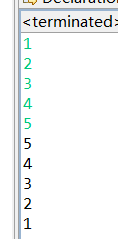
7. 将一个数组中的重复元素保留一个其他的清零。(知识点:数组遍历、数组元素访问)
import java.util.Scanner; public class lwm2 { /** * @param args */ public static void main(String[] args) { // TODO Auto-generated method stub // 7. 将一个数组中的重复元素保留一个其他的清零。(知识点:数组遍历、数组元素访问) Scanner input = new Scanner(System.in); int a[] = new int[5]; for (int i = 0; i < a.length; i++) { a[i] = input.nextInt(); } for (int i = 0; i < a.length - 1; i++) { for (int j = i + 1; j < a.length; j++) { if (a[i] == a[j]) { a[j] = 0; } } } for (int i = 0; i < a.length; i++) { System.out.println(a[i]); } } }
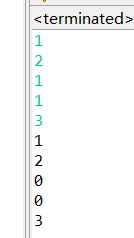
8、给定一维数组{ -10,2,3,246,-100,0,5},计算出数组中的平均值、最大值、最小值。(知识点:数组遍历、数组元素访问)
import java.util.Arrays; public class lwm3 { /** * @param args */ public static void main(String[] args) { // TODO Auto-generated method stub // 8、给定一维数组{ -10,2,3,246,-100,0,5},计算出数组中的平均值、最大值、最小值。(知识点:数组遍历、数组元素访问) int a[] = { -10, 2, 3, 246, -100, 0, 5 }; int max = a[0], min = a[0]; int sum = 0; double avg = 0; for (int i = 0; i < a.length; i++) { sum += a[i]; avg = sum / 7; if (a[i] > max) { max = a[i]; } if (a[i] < min) { min = a[i]; } } System.out.println("平均值为" + avg); System.out.println("最大值为" + max); System.out.println("最小值为" + min); } }

9、使用数组存放裴波那契数列的前20项 ,并输出 1 1 2 3 5 8 13 21
public class lwm4 { /** * @param args */ public static void main(String[] args) { // TODO Auto-generated method stub // 9、使用数组存放裴波那契数列的前20项 ,并输出 1 1 2 3 5 8 13 21 int a[] = new int[20]; a[0] = 1; int x = 1; int y = 1; int z = 1; for (int i = 0; i < a.length; i++) { a[i] = z; z = x + y; x = y; y = z; } for (int i = 0; i < a.length; i++) { System.out.println(a[i]); } } }

10、生成一个长度为10的随机整数数组(每个数都是0-100之间),输出,排序后,再输出
import java.util.Arrays; import java.util.Random; public class lwm5 { /** * @param args */ public static void main(String[] args) { // TODO Auto-generated method stub // 10、生成一个长度为10的随机整数数组(每个数都是0-100之间),输出,排序后,再输出 Random r = new Random(); int a[] = new int[10]; for (int i = 0; i < a.length; i++) { a[i] = r.nextInt(100); System.out.println(a[i]); } Arrays.sort(a); System.out.println("排序后输出"); for (int i = 0; i < a.length; i++) { System.out.println(a[i]); } } }
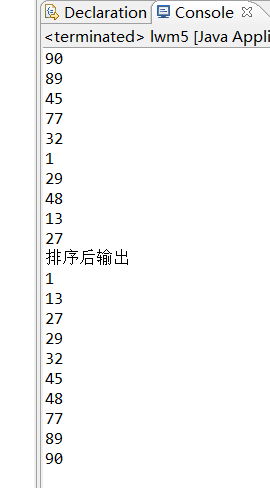




 浙公网安备 33010602011771号
浙公网安备 33010602011771号